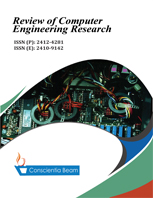Adaptive Beamforming Model for 5G High Speed Networks using Millimeter Wave Communication in Uplink
DOI:
https://doi.org/10.18488/76.v9i4.3160Abstract
Future generation cellular communications will require increased data rates and transmission using millimeter waves (MMWs), which are an emerging concept to meet this need. The MMW frequencies offer the potential for orders of magnitude capacity improvements. However, MMW network connections are more susceptible to blocking, and they suffer from rapid quality differential. The major limitation of offering multiconnectivity in MMWs is the necessity of tracking the direction of every link with its suitable timing and power. Beamforming enables wireless communications, even with higher frequency bands such as the MMW frequency band. The main purpose of this article is to develop an adaptive beamforming approach for 5G millimeter-wave networks. MMW communication efficiency is improved by enhancing the narrowband weights of adaptive beamforming. Here, the Shark Smell Optimization (SSO) and Bird Swarm Algorithm (BSA) are combined to improve the weight update approach of the new Salp-Bird Swarm Optimization (S-BSO) to achieve adaptiveness in beamforming. To demonstrate the effectiveness of the suggested Salp-Bird Swarm Optimization (S-BSO), an experimental comparison is carried out with the current models.





